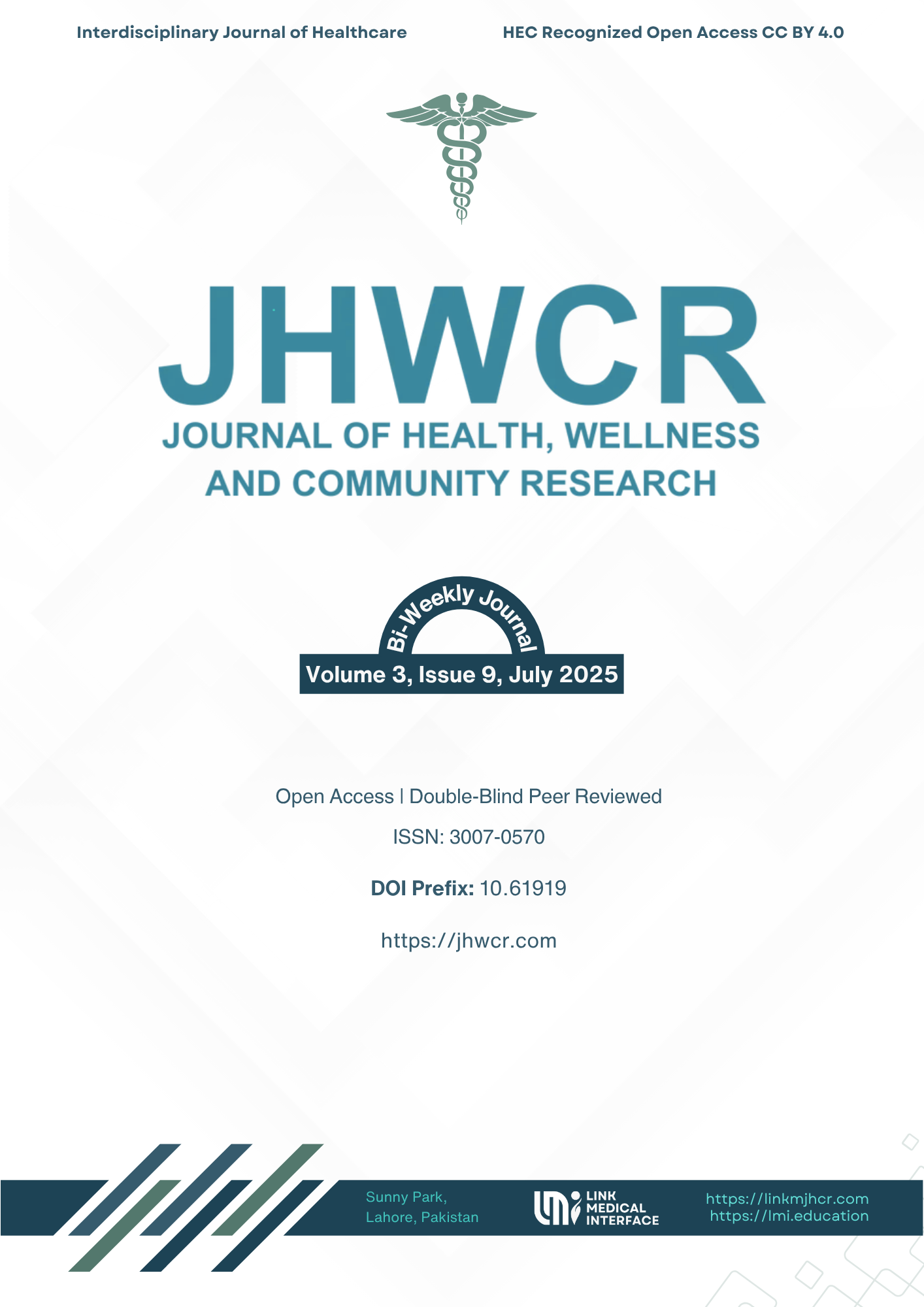Comparing the Efficacy of Robot-Assisted Therapy vs Traditional Physical Therapy for Motor Skill Acquisition in Cerebral Palsy
DOI:
https://doi.org/10.61919/7e4nsn59Keywords:
cerebral palsy, robot-assisted therapy, physical therapy, gross motor function, functional independence, spasticity, randomized controlled trialAbstract
Background: Cerebral palsy (CP) is a common neurodevelopmental disorder characterized by impaired movement and posture due to early brain damage, leading to substantial motor disability and dependence in daily activities. While traditional physical therapy (PT) has long been the standard for rehabilitation, robot-assisted therapy (RAT) has emerged as a promising approach offering repetitive, precisely controlled movements that may enhance motor learning and neuroplasticity. However, comparative evidence on their relative efficacy remains limited. Objective: To compare the effectiveness of RAT versus traditional PT in improving gross motor function, functional independence, and reducing spasticity in children with CP. Methods: A double-blind, randomized controlled trial was conducted with 60 children aged 4–12 years diagnosed with CP, allocated equally to RAT or PT groups. Interventions were administered three times weekly over eight weeks. Primary outcomes were changes in Gross Motor Function Measure (GMFM) and Pediatric Evaluation of Disability Inventory (PEDI) scores; secondary outcome was spasticity reduction measured by the Modified Ashworth Scale (MAS). Statistical analysis included independent and paired t-tests, ANCOVA for baseline adjustments, effect sizes, and confidence intervals. Results: Both groups improved significantly across outcomes (all p<0.001), but the RAT group achieved greater improvements in GMFM (mean Δ12.5 vs Δ7.8; p=0.021; Cohen’s d=0.84), PEDI (mean Δ14.2 vs Δ9.5; p=0.038; d=0.76), and spasticity reduction (mean Δ–2.1 vs –1.3; p=0.009; d=0.65). No adverse events were reported. Conclusion: RAT demonstrated superior short-term efficacy over traditional PT in enhancing gross motor skills, functional independence, and reducing spasticity in children with CP, supporting its integration into pediatric rehabilitation programs.
References
1. Paul S, Nahar A, Bhagawati M, Kunwar AJ. A review on recent advances of cerebral palsy. Oxid Med Cell Longev. 2022;2022(1):2622310.
2. Patel DR, Neelakantan M, Pandher K, Merrick J. Cerebral palsy in children: a clinical overview. Transl Pediatr. 2020;9(Suppl 1):S125.
3. Gulati S, Sondhi V. Cerebral palsy: an overview. Indian J Pediatr. 2018;85(11):1006-16.
4. Sadowska M, Sarecka-Hujar B, Kopyta I. Cerebral palsy: current opinions on definition, epidemiology, risk factors, classification and treatment options. Neuropsychiatr Dis Treat. 2020:1505-18.
5. Levitt S, Addison A. Treatment of cerebral palsy and motor delay. Chichester: John Wiley & Sons; 2018.
6. Mazumdar C. Effect of task-oriented training on motor function in children with cerebral palsy: a systemic review [master’s thesis]. Kaunas: Lietuvos sporto universitetas; 2021.
7. Rok-Bujko P, Kawecka J. Psychological and functional problems of children and adolescents with cerebral palsy from the neurodevelopmental perspective. Pediatr Pol. 2023;98(2):145-53.
8. Garcia-Gonzalez A, Fuentes-Aguilar RQ, Salgado I, Chairez I. A review on the application of autonomous and intelligent robotic devices in medical rehabilitation. J Braz Soc Mech Sci Eng. 2022;44(9):393.
9. Abidin N, Ünlü Akyüz E, Cankurtaran D, Karaahmet ÖZ, Tezel N. The effect of robotic rehabilitation on posture and trunk control in non-ambulatory cerebral palsy. Assist Technol. 2024;36(6):422-8.
10. Sung-U S, Nisa BU, Yotsumoto K, Tanemura R. Effectiveness of robotic-assisted therapy for upper extremity function in children and adolescents with cerebral palsy: a systematic review protocol. BMJ Open. 2021;11(5):e045051.
11. Banyai AD, Brișan C, editors. Robotics in physical rehabilitation: systematic review. Healthcare (Basel). 2024;12(1):26.
12. Cardone D, Perpetuini D, Di Nicola M, Merla A, Morone G, Ciancarelli I, et al. Robot-assisted upper limb therapy for personalized rehabilitation in children with cerebral palsy: a systematic review. Front Neurol. 2025;15:1499249.
13. Cortes-Perez I, Gonzalez-Gonzalez N, Peinado-Rubia AB, Nieto-Escamez FA, Obrero-Gaitan E, Garcia-Lopez H. Efficacy of robot-assisted gait therapy compared to conventional therapy or treadmill training in children with cerebral palsy: a systematic review with meta-analysis. Sensors (Basel). 2022;22(24):9910.
14. Sucuoglu H. Effects of robot-assisted gait training alongside conventional therapy on the development of walking in children with cerebral palsy. J Pediatr Rehabil Med. 2020;13(2):127-35.
15. Moll F, Kessel A, Bonetto A, Stresow J, Herten M, Dudda M, et al. Use of robot-assisted gait training in pediatric patients with cerebral palsy in an inpatient setting—a randomized controlled trial. Sensors (Basel). 2022;22(24):9946.
16. Bonanno M, Militi A, La Fauci Belponer F, De Luca R, Leonetti D, Quartarone A, et al. Rehabilitation of gait and balance in cerebral palsy: a scoping review on the use of robotics with biomechanical implications. J Clin Med. 2023;12(9):3278.
17. Lim JH, Kang EY, Park SJ, Kim BG. Effects of robot rehabilitation on the motor function and gait in children with cerebral palsy: a systematic review and meta-analysis. J Exerc Rehabil. 2024;20(3):92.
18. Arsovski D, Karovska Ristovska A, Ajdinski G, Rashikj Canevska O. The use of robotic rehabilitation in the treatment of motor impairments in children with cerebral palsy – a systematic review and meta-analysis. Res Educ Rehabil. 2024;7(2):260-80.
19. Yaşar B, Atıcı E, Razaei DA, Saldıran TÇ. Effectiveness of robot-assisted gait training on functional skills in children with cerebral palsy. J Pediatr Neurol. 2022;20(3):164-70.
20. Te Velde A, Morgan C. Gross Motor Function Measure (GMFM-66 & GMFM-88) User's Manual. 3rd ed. Philadelphia: Lippincott Williams & Wilkins; 2022.
21. Kallem Seyyar G, Aras B, Aras O. Trunk control and functionality in children with spastic cerebral palsy. Dev Neurorehabil. 2019;22(2):120-5.
22. Harb A, Kishner S. Modified Ashworth Scale. StatPearls [Internet]. Treasure Island (FL): StatPearls Publishing; 2023.
Downloads
Published
Issue
Section
License
Copyright (c) 2025 Nadeem Khalid, Kainat Sheikh, Hassan Javed, Sarfraz Ahmad, Taj Fareed, Mohammed Fadl Rasheed (Author)

This work is licensed under a Creative Commons Attribution 4.0 International License.


